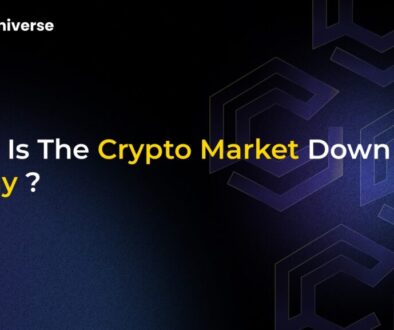The Impact of Reciprocal Tariffs on Global Trade and Crypto Markets

Understanding Reciprocal Tariffs: A Return to Trade Tensions
Reciprocal tariffs, a concept dating back to the 1930s, represent a direct approach to international trade disputes. In simple terms, they involve one country matching the tariff rates imposed on its goods by another country. The core idea was initially to encourage mutual reductions in trade barriers. However, the global trade landscape has seen a significant resurgence of these measures, most notably in the ongoing economic friction between the United States and China.
These modern reciprocal tariffs often stem from perceived trade imbalances and involve complex calculations attempting to quantify non-tariff barriers. The principle is straightforward: if country A imposes a certain tariff on goods from country B, country B responds by imposing a similar tariff on goods from country A. Recent policy discussions, including plans announced in early 2025, suggest a move towards aligning U.S. tariff rates more closely with those of its trading partners, potentially signaling a wider adoption of this reciprocal approach.
The US-China Trade Dispute: A Case Study
The most prominent example of reciprocal tariffs in action today is the trade conflict between the US and China. This escalated significantly when the US imposed substantial tariffs on a wide range of Chinese imports, prompting China to retaliate with its own tariffs on American goods. This tit-for-tat imposition of trade barriers has led to several significant economic consequences:
- Reduced Trade Volumes: Tariffs increase the cost of imported goods, naturally leading to a decrease in demand and overall trade between the affected nations. Data shows a decline in goods imported to the US from China following the implementation of these tariffs.
- Increased Production Costs: Businesses relying on imported components or materials face higher costs, which can be passed on to consumers through higher prices or absorbed by the company, impacting profitability.
- Supply Chain Disruptions: Companies may be forced to find alternative suppliers or relocate production facilities to avoid tariffs, causing significant disruption to established global supply chains.
- Global Economic Slowdown: Major trade wars between economic giants like the US and China have ripple effects, potentially dampening global economic growth and increasing uncertainty in international markets.
- Trade Tensions and Retaliation: The use of reciprocal tariffs often escalates trade tensions, increasing the risk of further retaliatory measures and prolonged disputes.
How Reciprocal Tariffs Shake the Crypto Markets
While seemingly disconnected, the world of global trade policy, particularly the use of reciprocal tariffs, has a tangible impact on the cryptocurrency market. Cryptocurrencies, despite their decentralized nature, are not immune to major macroeconomic shifts and geopolitical events. Here’s how trade disputes and tariffs can influence the crypto space:
Sensitivity to Macroeconomic Uncertainty
Crypto markets are notoriously sensitive to broader economic sentiment. Announcements related to significant tariff implementations, especially between major economies, often inject fear, uncertainty, and doubt (FUD) into financial markets, including crypto. This can trigger sell-offs as investors move away from assets perceived as riskier during times of instability. Historical examples show sharp declines in the prices of major cryptocurrencies like Bitcoin (BTC) and Ether (ETH) immediately following major tariff announcements.
Impact on Mining Operations
A more direct impact comes through the supply chain for cryptocurrency mining hardware. A significant portion of specialized mining equipment, such as ASICs (Application-Specific Integrated Circuits), is manufactured in China. Tariffs imposed by the US on these goods directly increase the operational costs for US-based Bitcoin miners. Higher hardware costs can squeeze profit margins, potentially slowing down the expansion of mining operations or even forcing smaller miners out. This could, in theory, impact the overall hash rate and security of the network, indirectly affecting prices.
Bitcoin: A Safe Haven Asset?
Amidst the turmoil caused by trade disputes, an interesting narrative emerges around Bitcoin as a potential ‘safe haven’ asset. Similar to gold, some investors turn to Bitcoin during times of economic uncertainty or geopolitical tension, seeking an asset perceived to be outside the direct control of governments and traditional financial systems. The argument is that its decentralized nature and limited supply could offer protection against inflation and currency devaluation often associated with trade wars.
However, this status is heavily debated. Critics point out Bitcoin’s high volatility and its increasing correlation with traditional risk assets like tech stocks, suggesting it behaves less like a stable safe haven and more like a speculative investment. Its price often drops alongside traditional markets during broad risk-off events, including those triggered by tariff news, casting doubt on its reliability as a hedge against trade war uncertainty.
Navigating the Intersection of Trade and Crypto
The resurgence of reciprocal tariffs adds another layer of complexity to the global economic picture, with clear spillover effects into the cryptocurrency market. While tariffs can create significant headwinds – driving market uncertainty, increasing costs for essential infrastructure like mining hardware, and triggering price volatility – they also highlight the ongoing search for alternative stores of value.
For investors and participants in the crypto market, understanding the potential impacts of global trade policies is becoming increasingly important. Whether Bitcoin ultimately solidifies its role as a digital safe haven or remains primarily a risk asset, the interplay between macroeconomic events like trade wars and the crypto ecosystem is undeniable. As trade tensions ebb and flow, the crypto market will likely continue to react, presenting both challenges and potential opportunities for those navigating this evolving landscape.


